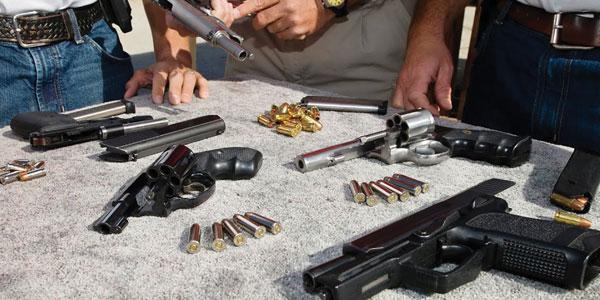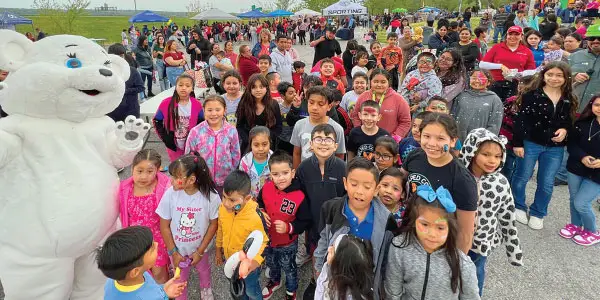
By Jorge Ramos
For those of us living in the United States or Mexico, it’s unlikely that we’ll always be protected from a well-armed gunman with murderous intent. So we’d all better come up with a personal plan. Just in case.
In the United States there are said to be more guns than there are people. In some areas of the country, buying a gun is easier than getting a prescription filled, and officials lack the political will to stand up to the National Rifle Association or other groups to restrict their distribution or use.
Mexico faces a different problem. Drug traffickers and other criminals have a vast supply of weapons — most of them smuggled into the country from the United States — and ordinary citizens don’t generally put their trust in the police or the federal government to protect them. If someone is robbed, or even kidnapped or killed, they know the crime will almost certainly go unpunished.
I live in Florida, a state where politicians think the best way to fight gun violence in schools is by giving teachers their own pistols. The ludicrous argument goes something like this: We must fight fire with fire, and weapons with other weapons, even in the classroom. Elected officials don’t dare take the more logical and reasonable step: banning the use of rifles, pistols and other weapons of war. Who came up with the brilliant idea that more weapons somehow equals less violence?
Florida’s Republican governor, Ron DeSantis, a former naval officer, signed into law the measure allowing guns in the classroom. Teachers who volunteer will receive special firearms training, once authorization is given by their school district, but the bottom line is that your son or daughter’s third grade math teacher could soon be packing a firearm along with his times tables. What if the gun discharges accidentally? What if someone is mistaken for an attacker? How will children react if a teacher becomes abusive, knowing that he is carrying a handgun?
More firearms simply will not reduce the incidence of school shootings. Since 1999, over 228,000 students in the United States, in 234 schools, have experienced shootings firsthand, according to The Washington Post. It was in 1999 that 12 students and one teacher were killed at Columbine High School in Colorado, the deadliest school shooting in United States history at the time.
Near my home in Parkland, Florida, 17 students and teachers were killed in a rampage just last year. And it will happen again. And again. And again. And yet again. That’s why students in the United States now brace themselves for the worst.
And when faced with the worst, some students have become heroes, but lost their lives in the process. Kendrick Castillo, 18, lunged at the shooter who burst into the room during his literature class recently at a STEM School in Highlands Ranch, Colorado; Riley Howell, 21, did the same thing, tackling a gunman at the University of North Carolina at Charlotte. He was shot three times. Both students died. But they probably saved many lives.
When threatened by a gunman, a number of police forces in the United States and the Department of Homeland Security itself recommend we do one of three things: First, run; if you cannot run, hide; and if all other options fail, fight.
Mexico’s problems with violence stem from different causes and require a very different approach. Criminal gangs have control over some areas of the country; millions suffer under the yoke of poverty and inequality; corruption is rampant. The drug war has been an utter failure. Weapons are smuggled in easily from the United States. In short, the Mexican government is unable to safeguard its people.
Even worse, nothing appears to be improving. Over 230,000 Mexicans were killed in the past two six-year presidential terms. Already, the first quarter of 2019 — under a new presidential administration — has been the bloodiest on record.
Of course, we can allow for a longer honeymoon with President Andrés Manuel López Obrador. And he cannot be blamed for what happened before he took office. However, a recent shooting in Cuernavaca — two people were killed in broad daylight, in front of TV cameras, while the perpetrators showed not the slightest fear of the authorities, or the law — is a huge and urgent call to the new administration.
Similar stories can be heard all through the country. At what point can previous administrations no longer be deemed responsible for such killings? From the moment López Obrador’s new National Guard becomes operational? To me, violence is the main problem to be solved in Mexico. And running away is not the right option, not in Mexico, not anywhere in the world.
_______________________________________________________________________
Corre, Escóndete o Pelea
Si vives en México o en Estados Unidos es muy posible que nadie te pueda proteger frente a un pistolero bien armado y con la intención de matar. Por eso, más vale que tengamos un plan personal. Just in case.
En Estados Unidos hay más armas que personas, existen lugares donde puede ser más fácil conseguir una pistola que una prescripción médica, y casi no hay ninguna voluntad política para desafiar a la Asociación Nacional del Rifle (NRA) y restringir su venta y uso.
En México el problema es distinto. Hay muchas armas en manos de los cárteles y los criminales — en buena parte, provenientes de Estados Unidos — y no hay ninguna confianza de que la policía o el gobierno federal te puedan proteger. Y si te matan, asaltan o secuestran, es casi seguro que el crimen quedará impune.
Vivo en la Florida, un estado donde hay políticos que creen que la mejor forma de enfrentar la violencia por las armas de fuego en las escuelas es darles pistolas a los maestros. El argumento ridículo va, más o menos, así: Hay que enfrentar fuego con fuego y armas con armas. Lo que estos políticos no se atreven a hacer es lo más lógico y sensato: prohibir el uso de rifles, pistolas y armas de guerra. ¿A quién se le ocurrió la brillante idea de que más armas generan menos violencia?
El gobernador de la Florida, Ron DeSantis, firmó una ley que le permitirá a los maestros del estado portar armas en las salas de clase. Los profesores que lo deseen requerirán un entrenamiento especial con la previa autorización de su distrito escolar. Pero, al final de cuentas, el maestro de matemáticas de tercero de primaria de la escuela de tu hijo o hija podría llevar una pistola junto con las tablas de multiplicar. ¿Y si dispara a alguien por accidente? ¿Y si lo confunden con un terrorista? ¿Cómo reaccionarán los niños ante un maestro abusivo que tiene un calibre 22 en el cinturón?
Más armas no van a lograr que disminuyan los tiroteos en las escuelas. Más de 228 mil estudiantes en Estados Unidos han sufrido en carne propia algún tipo de tiroteo en 234 escuelas desde 1999, según calculó el diario The Washington Post. Ese fue el año en que mataron a 12 estudiantes y un profesor en la escuela Columbine de Colorado.
Cerca de mi casa, en Parkland, Florida, mataron a 17 alumnos y empleados el año pasado. Y volverá a ocurrir. Otra vez. Y otra vez. Y una vez más. Por eso los estudiantes en Estados Unidos se están preparando para lo peor.
Aquí hay dos ejemplos: Kendrick Castillo, de 18 años, se le lanzó a un pistolero que se metió a su clase de literatura en una escuela de Highlands Ranch, Colorado; lo mismo hizo Riley Howell, de 21 años, cuando se le fue de frente a un hombre armado en la Universidad de Carolina del Norte en Charlotte y recibió tres disparos. Los dos estudiantes murieron. Pero probablemente salvaron muchas vidas.
Ante la amenaza de un pistolero, aseguran varios cuerpos de policía en Estados Unidos y el mismo Departamento de Seguridad Interna que hay que hacer tres cosas: primero, correr; si no se puede, esconderse; y si no queda otra opción, pelear.
En México el problema de la violencia tiene otro origen y requiere de soluciones distintas. Hay un vacío de autoridad, grupos criminales controlan partes del país, millones sufren de pobreza y desigualdad, la corrupción es rampante, la guerra contra las drogas fue un fracaso, las armas entran fácilmente de Estados Unidos, y el gobierno no les puede garantizar la vida a sus ciudadanos.
Y las cosas no parecen mejorar. En los últimos dos sexenios fueron asesinados más de 230 mil mexicanos. Y el primer trimestre de este 2019 — ya con un nuevo presidente — fue el más sangriento que se recuerde.
Claro, le podemos extender un poquito más la luna de miel a Andrés Manuel López Obrador. No es su culpa lo que pasó antes. Pero el reciente tiroteo en Cuernavaca — en que asesinaron dos personas a plena luz del día, frente a cámaras de televisión y sin ningún temor a las autoridades o a la ley — es un enorme y urgente desafío al nuevo gobierno.
Esto se repite en todo el país. ¿En qué momento ya no se les pueden achacar los asesinatos a los presidentes anteriores? ¿Hasta que empiece a funcionar la Guardia Nacional? La violencia es, para mí, el principal problema a resolver en México. Y echarse a correr no es, en ninguna parte del mundo, la solución.









